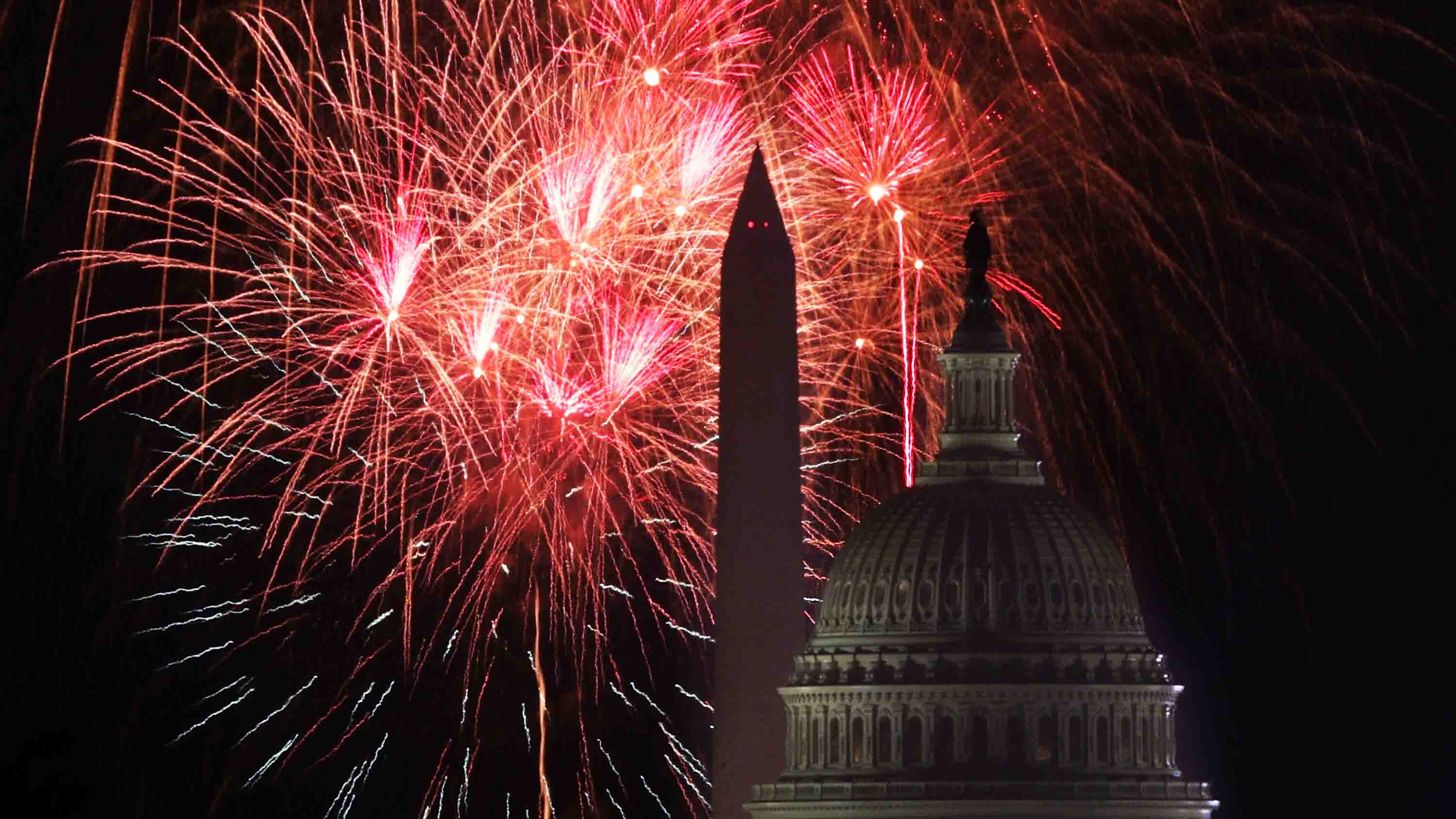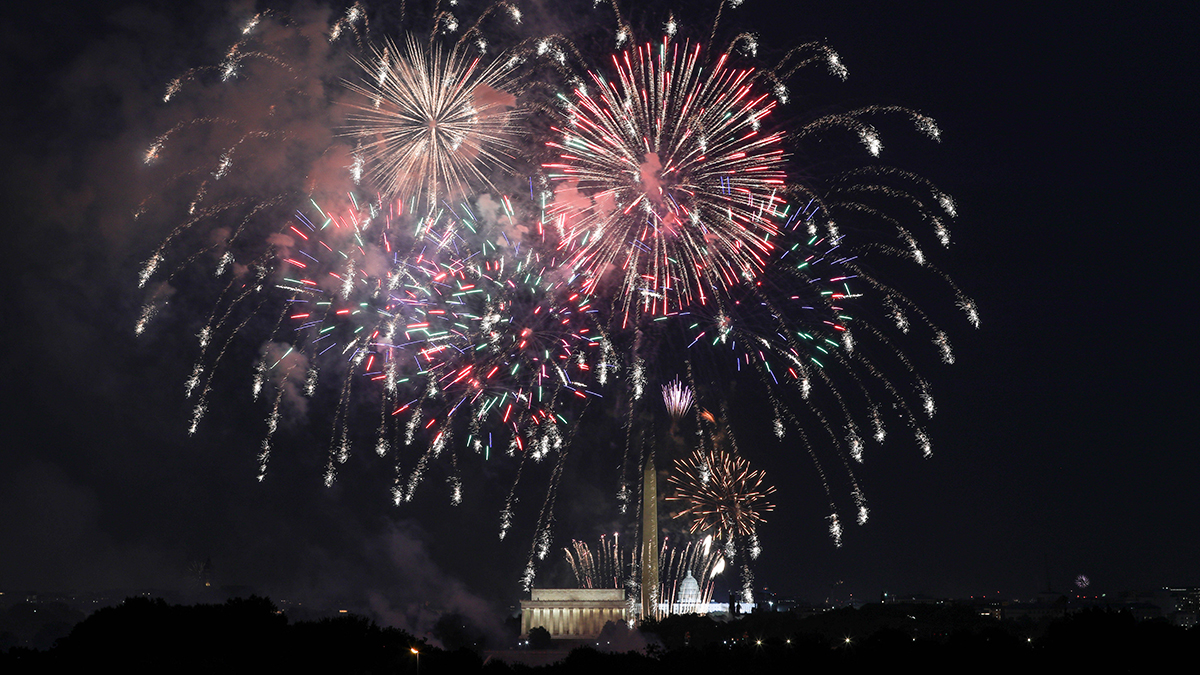Fourth of July travel is expected to spike up to 70% in Washington, D.C., Maryland and Virginia and most travelers — up to 3.4 million people — will choose road trips, AAA says.
Rain and thunderstorms in the forecast could make traffic and gridlock worse — especially on the Chesapeake Bay Bridge. Two-way traffic on the bridge could be prohibited during severe weather this weekend, Maryland officials warn.
Maryland will suspend non-emergency lane and shoulder closures from Friday, July 2, to Wednesday, July 7.
We're making it easier for you to find stories that matter with our new newsletter — The 4Front. Sign up here and get news that is important for you to your inbox.
The Virginia Department of Transportation will suspend work zones and lift most lane closures from noon Friday to noon Tuesday.
HOV restrictions on Interstate 66 and rush-hour tolls on the 66 Express Lanes inside the Beltway will be lifted on Monday, VDOT says.
Keep an eye on Virginia 511 and Maryland CHART for more information.
Over 1.3 million people in the region are expected to travel 50 miles or more for the holiday. Plan travel wisely, particularly on busy roads like Interstate 95 and the Chesapeake Bay Bridge, AAA says.
Worst Times to Leave
The worst traffic is expected Thursday and Friday afternoon, then midday Monday, AAA says.
Try to avoid driving during peak expected gridlock hours of 3 to 5 p.m. Thursday and 4 to 5 p.m. Friday, AAA says. Strong to severe thunderstorms are likely Thursday afternoon and more storms are possible Friday afternoon, so keep an eye on the Storm Team4 forecast.
Saturday from 11 a.m. to 1 p.m. could also be congested, AAA says.
Interstate 95 southbound, from Route 3 to Dumfries Road, is expected to have serious delays Thursday 2 to 4 p.m. and Monday 4 to 5 p.m. AAA says that is the area’s worst corridor for traffic and you should expect a 30% longer travel time.
The Chesapeake Bay Bridge and the U.S. 50 corridor will likely be congested all weekend, AAA says. Here are ways to avoid the Bay Bridge if traffic gets bad.
Best Times to Leave
In general, leaving early before 10 a.m. or late after 10 p.m. will be your best bet — just make sure you’re rested and alert.
AAA advises:
- On Thursday, consider leaving after 7 p.m.
- On Friday, leaving before noon could save you from getting stuck in the worst traffic.
- On Saturday, get a later start after 2 p.m. for easier roads.
- On Sunday — Independence Day — AAA expects mostly free-flowing traffic— so a quick day trip may be a good option.
- On Monday, travel before 1 p.m. to beat crowds.
For the Chesapeake Bay Bridge, the Maryland Transportation Authority planning to travel when there's a low risk of storms, wind or other severe weather, plus at these times:
- Friday, July 2 – before 8 a.m. and after 8 p.m.
- Saturday, July 3 – before 6 a.m. and after 8 p.m.
- Sunday, July 4 – before 8 a.m. and after 10 p.m.
- Monday, July 5 – before 6 a.m. and after 5 p.m.
Fourth of July Road Trip Safety Tips
Experts have some tips on making sure you stay safe during your summer holiday.
- Always buckle up, slow down and don't use your phone while driving and never drink and drive.
- Get your car checked before you head out on trips. This month, certain AAA Car Care Centers are giving free inspections, including to non-members. Here's a coupon and more information.
- Move over if emergency vehicles approach.
- Keep a first aid kit and extra bottles of water, plus a portable phone charger and walking shoes, SafeAuto says.
- There has been a surge in road rage incidents during the pandemic. If you encounter an angry driver, Prince William County Police advises trying to deescalate by getting out of their way, putting your pride aside and not challenging them, ignoring gestures and avoiding eye contact.



